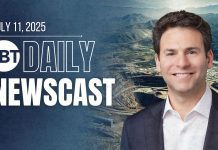By 2035, all new cars sold in California must be electric vehicles (EVs), a significant change from the current landscape where gas-powered cars dominate. This shift will present substantial challenges for dealers, who will need to adapt their sales strategies, and for consumers, who will be dealing with a new type of personal transportation. Today on Inside Automotive, we’re pleased to welcome Brian Maas, President of the California New Car Dealers Association, who discusses this important topic further.
Maas says, “it will be as big of a transition as going from horse and buggy to automobile. “It’s going to be a challenge for many dealers.”
Major automakers are in different phases of transitioning to electric vehicles, and many consumers still have questions about whether EVs are right for them. Most major manufacturers have gone along with the program, though some are further along than others.
As EVs become more widely adopted, consumers will have more choices of vehicles. However, they may still have questions about the benefits and drawbacks of EVs compared to traditional gasoline-powered cars.
According to experts, affordability will be the number one issue as we move towards a goal of 100% electric vehicles on California roads by 2035.
EV prices need to come down for the state to reach its goal, which may not be easy. Used car demand is likely to shift, with more vehicles coming into California from other states as well.
As electric vehicles grow in popularity, the question of whether the power grid can handle the increased demand has come to the forefront.
Many experts are suggesting that instead of charging at night, when demand on the grid is lower, people should charge their vehicles during the day when there is more solar power available.
The issue of battery storage is also vital, as it will be necessary to store solar power for use when the sun is not shining.
As electric vehicle sales continue to ramp up, many dealers are left with unanswered questions about how to handle these types of cars. There are several expenses associated with outfitting dealerships to be able to sell EVs, and many believe that the traditional model of manufacturers making the cars and dealers selling them is the most successful way to go. However, more prominent names like Tesla are finding success with direct-to-consumer sales, and it remains to be seen whether this model will succeed on a larger scale.
Some dealerships are finding ways to capitalize on inventory shortages by charging above the manufacturer’s suggested retail price (MSRP). This practice could lead to some consumers leaving major brands in favor of cheaper alternatives.
Tesla has been known to raise its MSRP multiple times in a single month, and other original equipment manufacturers (OEMs) are also able to change their prices at will.
According to Maas, dealerships are charging what the market will bear for these sales. While the MSRP may be higher, franchises offer more services than just the sale of cars, including financing, trade-ins, used vehicles, parts, and services. You don’t get these things with direct-to-consumer sales models from these OEMs.
Dealerships are able to provide information about the performance and utility of a vehicle, but it is up to the consumer to decide if they are willing to pay the asking price.
California has seen its fair share of political turmoil in the past year, but one thing that Maas’s association has accomplished is leading the coalition to qualify a ballot initiative to reform the state’s Private Attorney General Law.
Maas and his dealers in California are keeping a close eye on elections, as some dealers are candidates for certain positions. If someone in the industry is elected, they will be able to explain how sales work instead of the caricature many people have in their minds.
According to Maas, inventory levels have been a challenge for dealerships across the country, and that doesn’t seem to be changing anytime soon. “There’s a flicker at the end of the tunnel vs. a big beam. Getting and keeping inventory is tough, and that hasn’t changed in the last few months, and they are expecting that to continue.”
The car buying market is facing some challenges. Interest rates, inflation, and affordability are all concerns. And once inventory has come back, will customers be able to buy at that time? All of these factors could have an impact on the market.
Did you enjoy this interview with Brian Maas? Please share your thoughts, comments, or questions regarding this topic by connecting with us at newsroom@cbtnews.com.
Be sure to follow us on Facebook, LinkedIn, and TikTok to stay up to date.
While you’re here, don’t forget to subscribe to our email newsletter for all the latest auto industry news from CBT News.







